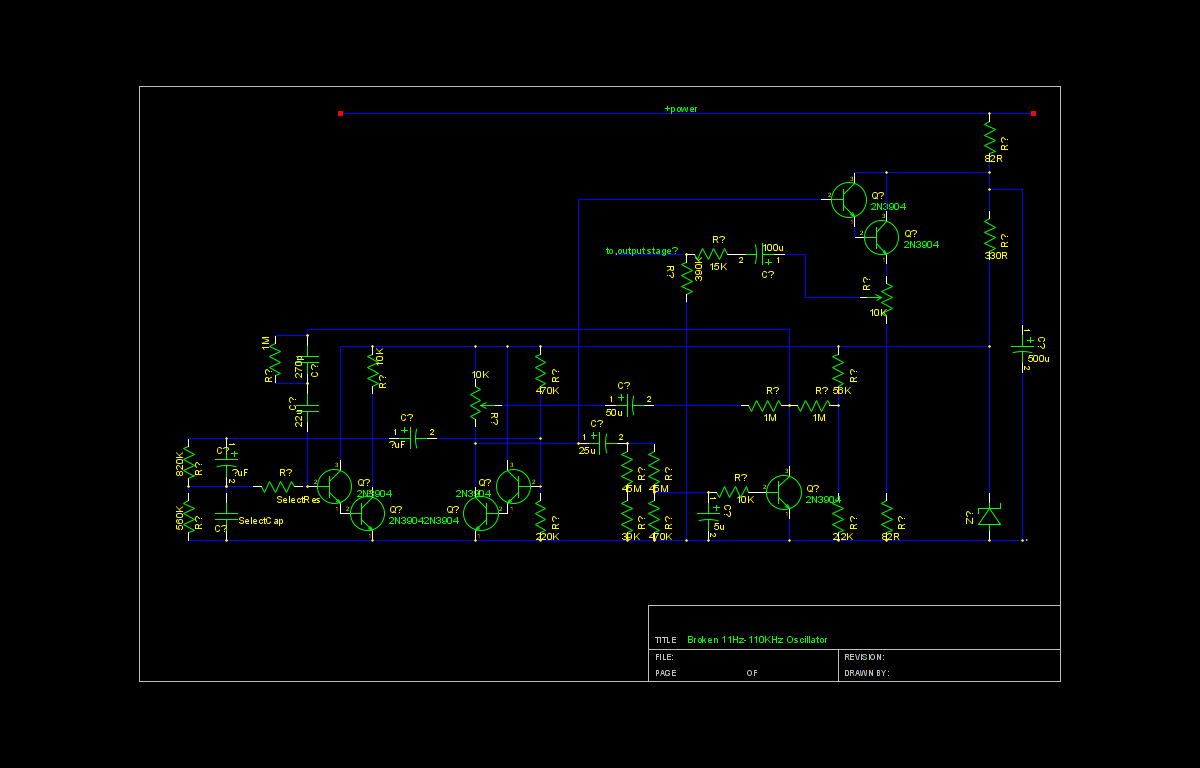I have this broken oscillator, it should be 11Hz to 110KHz, but it doesn't seem to work properly, the output is really "noisy" - Something seems to have gotten open circuit.
Bad capacitor for sure, or perhaps an open circuit somewhere. However this seems to be a homemade unit, so not sure if there's data available anywhere.
So I did a partial circuit extract to figure out how this works, to find out whether or not this should be generating a sine wave generator as that could be useful (though a square wave is fine too). As I started drawing the schematic, I was kind of baffled by it: What kind of oscillator, and why is it built this way?
This looks like a multivibrator oscillator, using a zener diode to keep voltage constant to maintain a bit of frequency stability.

I'm sure I have a lot of extraction errors here, as this was a vectorboard homemade unit and thus a bit tougher ("virtual" multilayer). Any comments about this circuit (It's not complete, but has the oscillating portion. An oscilloscope attached to this portion of the circuit exhibits the same problem as the output, so the output stage looks OK...
Note: It uses 2N3393 transistors, not 2N3904s...
Any ideas? I'm wondering if I should just junk this circuit and replace it with a few op amps...
Bad capacitor for sure, or perhaps an open circuit somewhere. However this seems to be a homemade unit, so not sure if there's data available anywhere.
So I did a partial circuit extract to figure out how this works, to find out whether or not this should be generating a sine wave generator as that could be useful (though a square wave is fine too). As I started drawing the schematic, I was kind of baffled by it: What kind of oscillator, and why is it built this way?
This looks like a multivibrator oscillator, using a zener diode to keep voltage constant to maintain a bit of frequency stability.
I'm sure I have a lot of extraction errors here, as this was a vectorboard homemade unit and thus a bit tougher ("virtual" multilayer). Any comments about this circuit (It's not complete, but has the oscillating portion. An oscilloscope attached to this portion of the circuit exhibits the same problem as the output, so the output stage looks OK...
Note: It uses 2N3393 transistors, not 2N3904s...
Any ideas? I'm wondering if I should just junk this circuit and replace it with a few op amps...
Comment